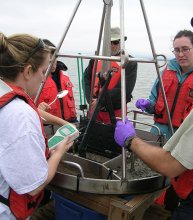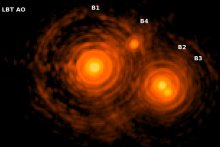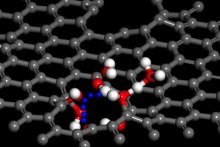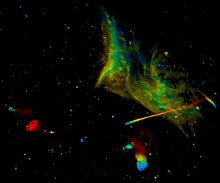News

Study shows new potential indirect effects of humans on water quality
Posted
A study published today shows that a newly studied class of water contaminants that is known to be toxic and hormone disrupting to marine animals is present likely due in part to indirect effects of human activity.

Will E.T. phone home? U of M lecture explores search for alien worlds
Posted
An upcoming University of Minnesota lecture entitled ‘To the Stars We Will Go: The Worlds of Exoplanets’ will highlight how astronomers detect and characterize planets outside our solar system that could harbor alien life.

Dark matter may not be completely dark after all
Posted
For the first time dark matter may have been observed interacting with other dark matter in a way other than through the force of gravity.

U of M lecture explores impact of 'citizen scientists' on research
Posted
The Zooniverse is an online portal to help researchers solve many kinds of problems like finding differences between types of galaxies, counting craters on the moon, learning about climate change from transcribing weather data in ships records from World War I, and hunting for planets outside our solar system that may even be like Earth.

University of Minnesota selected as hub for NIH program to accelerate new inventions to the market
Posted
The University of Minnesota announced today it has been selected by the National Institutes of Health as one of three Research Evaluation and Commercialization Hub (REACH) sites nationally to establish a university-wide strategic framework promoting commercialization and technology transfer in the life sciences and biomedical technology.

Imperfect graphene opens door to better fuel cells
Posted
The honeycomb structure of pristine graphene is beautiful, but a national group of researchers has discovered that if the graphene naturally has a few tiny holes in it, you have a proton-selective membrane that could lead to improved fuel cells.

Researchers produce detailed image of gigantic galaxy-cluster collision
Posted
A University of Minnesota astrophysicist is part of a national team of researchers that has produced the most detailed image yet of a fascinating region where clusters of hundreds of galaxies are colliding, creating a rich variety of mysterious phenomena visible only to radio telescopes.

Researchers identify materials to improve biofuel and petroleum processing
Posted
Using one of the largest supercomputers in the world, a team of researchers led by the University of Minnesota has identified potential materials that could improve the production of ethanol and petroleum products.

University of Minnesota solar car finishes second in cross-country race
Posted
The University of Minnesota Solar Vehicle Project team finished second overall in the 2014 American Solar Challenge, an eight-day, 1,700-mile race that started in Austin, Texas on July 21 and ended at the University of Minnesota in Minneapolis today.
University of Minnesota Professor Sachin Sapatnekar Honored for Excellence in Semiconductor Research
Posted
University of Minnesota professor Sachin Sapatnekar has been awarded the Semiconductor Industry Association (SIA)’s University Research Award, in recognition of his outstanding contributions to semiconductor research.
